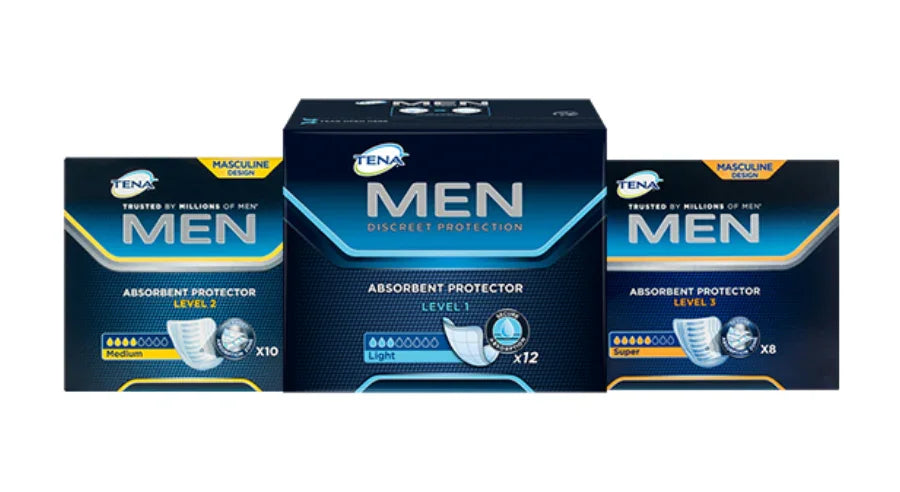LIVING WITH INCONTINENCE
Incontinence exercise
Read moreFREE SHIPPING ON ALL ORDERS!

A study among independent people over 60 with uncomplicated urinary incontinence revealed that only 15% of men wore incontinence products compared to 87% of women. We can only imagine that a key barrier for men is psychological.
On average, females start using pads monthly from the age of 12 and continue to do so for 40 years, so it’s no wonder that they’re familiar with the benefits. However, the association with menstruation and femininity could be at the root of why men feel uncomfortable with incontinence products.
It may also be of interest to know that period products and incontinence products aren’t the same.
Simply thinking of incontinence pads as products to manage a condition, rather than having any gender association, may be helpful in overcoming this bias.
If your unfamiliar with male incontinence pads, which are called ‘incontinence guards’, you may have some of these preconceived ideas that aren’t true.
To determine the best product, consider:
If you need help selecting a product, use the TENA Product Finder Tool which will step you through a series of questions to determine the most appropriate option. You can then order a free sample, which will be sent out in unbranded packaging.
You may also want to read on the difference between TENA Shields and TENA Guards
There are also other incontinence products for men, including drainage condoms, penile sheaths and external catheters. You can read more about these here.
1. The right underwear. If you’re using a TENA Shield or TENA Guard that affixes to the inside of your underwear, it needs to be firm fitting. A trunk or jockey-style brief is ideal. Boxer shorts are not suitable as they don’t hold the product closely to the body for a secure and discreet fit.
2. Take care with placement. Make sure the guard is positioned correctly to ensure that its comfortable as well as reducing the chance of leakage. Read the instructions and use the adhesives that attach to the inside of your underwear for a secure fit.
3. Changing your guard. There are no strict rules about when to change your product, but at least twice during the day is best. Indications that it’s time to change include sensing that the guard is getting ‘full’ and approaching maximum capacity or if you want to freshen up. It’ll also depend on what type of incontinence you have. For example, after dribble when a few drops are lost, probably wouldn’t require an immediate change, but Functional Incontinence which could result in the entire bladder emptying, would. Once you start using products, you’ll quickly work out a schedule that suits you and your condition.
4. Disposing of guards. Used guards and pants can be rolled up’ and placed directly into the bin. If there is any solid faecal matter, dispose of that into the toilet first. You may wish to put used protection in an opaque plastic bag for greater discretion if you’re out and about. And NEVER attempt to flush an incontinence product down the toilet – it will block the drain.
![]()
Although you may feel some trepidation when you start using protection, once you’ve experienced the discretion and security, you’ll appreciate the confidence they provide.
Once you’ve found the right one for you, products can be ordered directly from TENA’s online shop and delivered to your home in unbranded packaging..
Source:
Asaleo Care makes no warranties or representations regarding the completeness or accuracy of the information. This information should be used only as a guide and should not be relied upon as a substitute for professional, medical or other health professional advice.